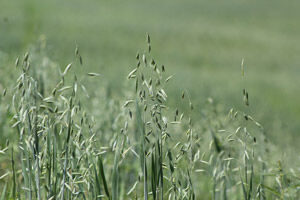October alfalfa harvest considerations
With droughty conditions across Nebraska and late season moisture regenerating stands of alfalfa, is there still an opportunity to take October alfalfa cuttings? And which stands could handle a late season cut?
Alfalfa stands with at least six weeks of regrowth in mid-October will have developed adequate winter-hardiness and may be a candidate for late cutting. At this point, the alfalfa has begun to go dormant as days shorten and temperatures cool. In these conditions, harvest may be permissible, but is still a stress on the plant. October hay will be high quality and offers an opportunity for additional forage, but the success of this scenario is also highly dependent on weather. A harsh, long winter or cool, limited sunny days in fall during the recovery period could further stress the stand. This along with the stress of taking a late alfalfa cutting could cause stand loss over the winter, increased weed pressure next year, and lower alfalfa yields next spring.
Considerations for choosing fields suitable for fall harvest
-
Only cut 3 times or at a frequency longer than 30 days between cuttings;
-
Stands under 3 years old;
-
Adequate soil fertility and a soil pH near 6.8;
-
Well drained fields, with no drainage issues;
-
Low incidence/history of crown and root rot; and
-
Varieties with high disease tolerance and winter hardiness ratings.
Late cutting logistics can be challenging because alfalfa dries and cures very slowly in October. If you do harvest, check weather reports, use a conditioner to speed dry-down, spread windrows wide for extra exposure to sunlight, and consider using a preservative to protect hay that is baled at higher than normal moisture levels.
Bales put up too wet will heat internally and may pose a fire danger. Keep an eye on wetter than average bales and store in a separate area where they can be easily contained if combustion does occur.
When possible, it is better to harvest alfalfa as haylage in October. Less drying is needed, and since drying is slower, haylage can be made at a more uniform moisture content than in summer. October alfalfa also tends to preserve well as haylage. Grazing may also be an option to consider.


